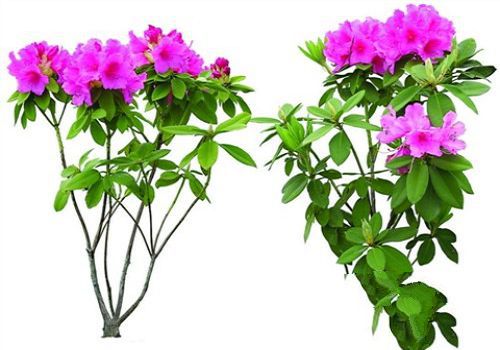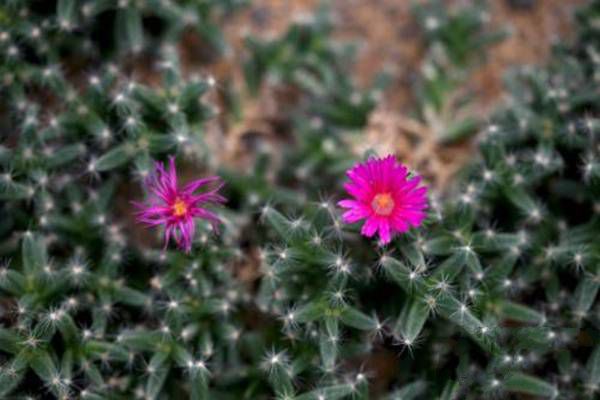How to trim and shape flowers

Pruning: to choose the appropriate time, master the correct pruning method, generally in the dormant period and growing period can be pruned, but in the specific grasp, should be determined according to their habits, cold resistance and pruning purpose. Generally speaking: flowers with long leaves after flowering in early spring, such as plum blossom, spring welcome, etc., flower buds are born on biennial branches, must be pruned after flowering, if pruned before sprouting in early spring, the flower branches will be cut off, resulting in the phenomenon of no flowers. Therefore, pruning should be carried out within 1-2 weeks after flowering, but at this time the flowers and trees have begun to grow, the sap flow is more exuberant, and the amount of pruning should not be too large.
Flowers and trees that bloom in summer and autumn, such as crape myrtle, rose, jasmine, etc., their flower buds are born on the branches of the same year and can be pruned during the dormant period before germination. Foliage flowers can also be dormant. In the dormant period of pruning, cold tolerance can be carried out in late autumn and early winter, should not be pruned prematurely, so as not to induce autumn shoots, which is not conducive to blossom and fruit in the coming year and prevent cold and cold. Those who are afraid of pity should start to flow in early spring, but before sprouting. In addition, the purpose of shaping flowers and trees, sawing thick branches or pruning is for renewal, so when forced pruning is needed, it is suitable to be carried out in the dormant period.
The pruning in the growing period of flowers is mostly for ventilation and light, to remove disease and insect branches, to grow branches or to adjust nutrition, to make the flowers more elegant, dense, robust and light in general. Also pay attention to the bud of the cut to leave the outside, so that the branch extends outward, and the cut into a slope, leaving the bud should be on the other side of the cut. The top of the cut bevel should be slightly higher than the bud 1-2 mm, not too high or too low.
1. Pruning and coring: pruning and coring is the work of removing the top of a growing branch. The branches that have hardened need to be called cutting tips with scissors, the branches are tender, and the tender shoots can be removed with fingers as the heart. The purpose of pruning and coring is to restrain height growth, benefit nutrient accumulation, enrich branch tissue, promote sprouting lateral branches, increase the number of developing branches and blossoms, or dwarf plants, complete plant shape, neat flowering, etc., such as chrysanthemum can blossom more than 3000 on a plant, which is the result of repeated coring, in addition, coring can also inhibit growth and delay flowering.
2. Erasing buds: wiping buds is to remove the axillary buds, twigs or buds of flowers, in order to concentrate nutrients, make the trunk straight and strong, the flowers are large and gorgeous, and the fruits are plump and full.
3. Branch thinning: in order to adjust the posture of the tree, facilitate ventilation and light, generally cut off withered branches, disease and insect branches, slender branches, parallel branches, overgrown branches, dense branches, etc., when thinning branches, the residual can not be too long, nor can it be cut into the next branch, the upper cut is from the branch point, cut at a 45-degree oblique angle, the cut should be smooth, flowers and trees with weak sprouting power, such as Magnolia, Magnolia, etc., the amount of sparse branches should be less.
4. Root cutting: root cutting is mostly carried out when transplanting and changing pots (turning pots). For example, when seedlings are transplanted, the overlong main roots are cut short to promote the growth of lateral roots. moderate root cutting when flowers are put on or changing pots can inhibit the growth of branches and leaves and promote the formation of flower buds. Root cutting is generally carried out in the dormant period, but when the plant grows too much, root cutting can also be carried out during the growing period.
5, standing bracket: commonly known as "tie racket" (commonly known as "racket") to cultivate potted flowers climbing vines, such as trailing hydrangea, Lingxiao, wisteria, etc., using thin bamboo poles, Reed poles or thick lead wire to bind branches and vines with thread to make them climb and grow and increase the ornamental effect.
Plastic surgery: generally there are single-stem type (such as single-dried chrysanthemum, single-dried dahlia, etc.), multi-dry type (such as begonia, pomegranate, peach, plum, etc.), cluster type (such as brown bamboo, southern bamboo, Phoenix tail bamboo, etc.), hanging branch type (such as cliff chrysanthemum, ivy, etc.), in short, according to needs and hobbies through artistic processing, careful consideration, careful maintenance, in order to achieve the desired purpose.
Related
- What if the leaves of potted flowers turn yellow?
- Florescence Control of several Flowers
- Anti-freezing technology and post-freezing nursing technology of flowers
- What is the classification of flowers? What are the common methods of flower classification?
- Prevention and control of alkali and acid damage of flowers in courtyard
- Technology of Anti-freezing and restoring growth of Flower seedlings in greenhouse and greenhouse
- How does flower fertilization not hurt the root? Fertilization technology of flowers
- Key points of disinfection in flower greenhouse
- Several pesticides that are banned or used cautiously in flowers
- How to fertilize the flowers that watch the leaves?



